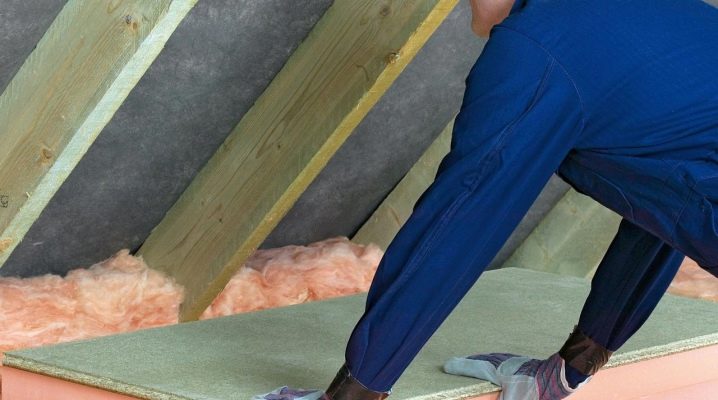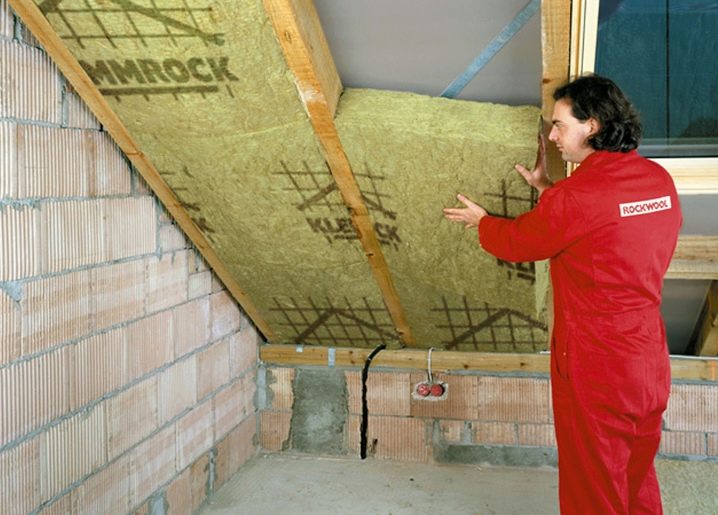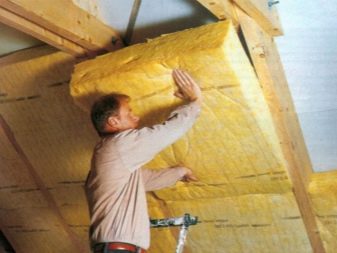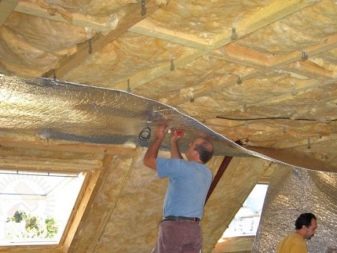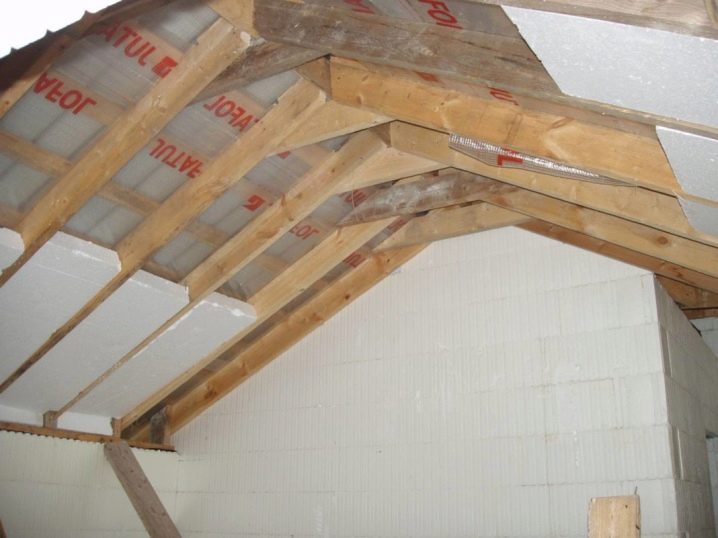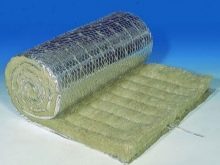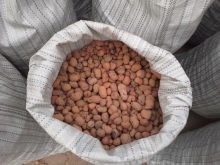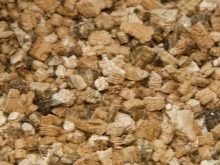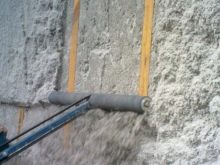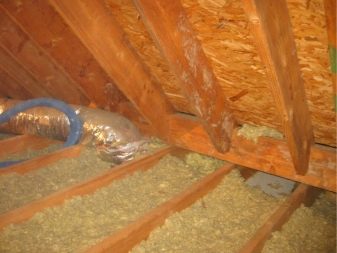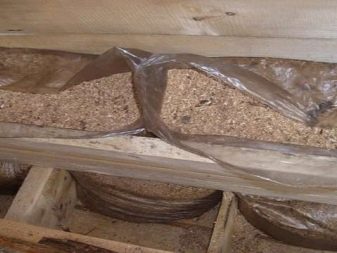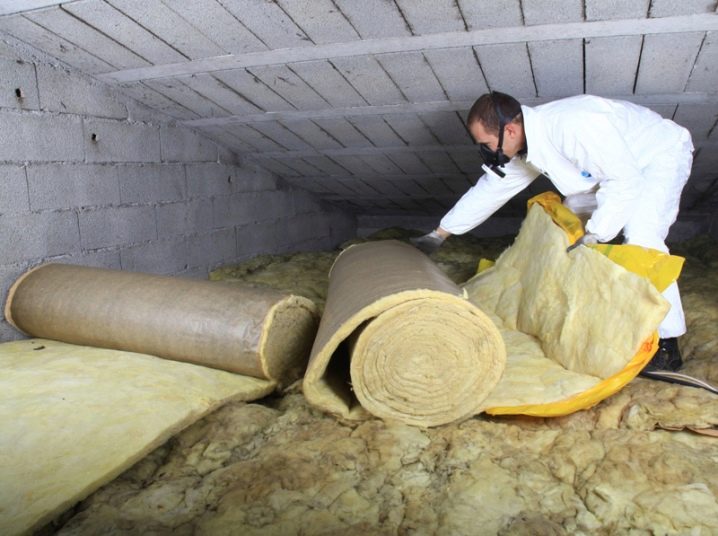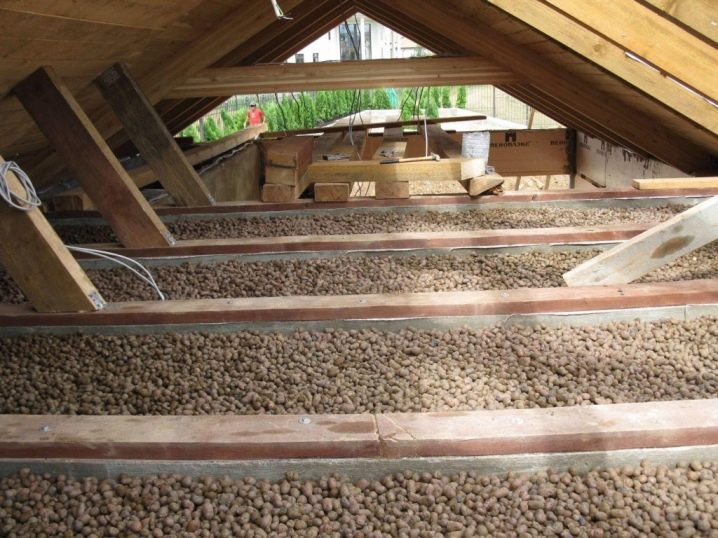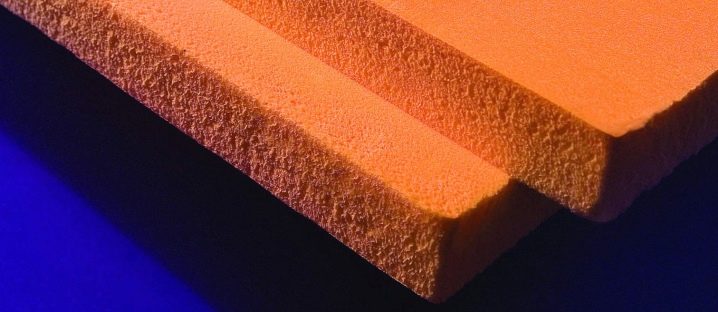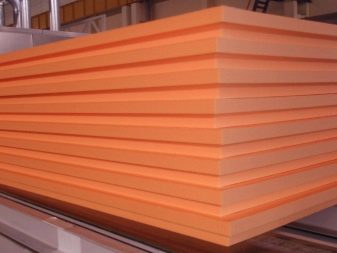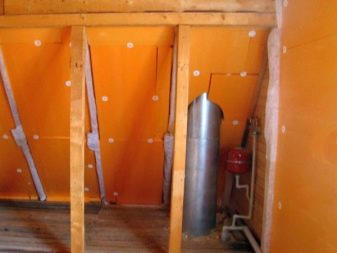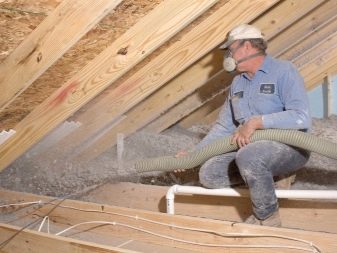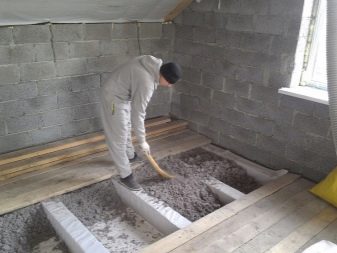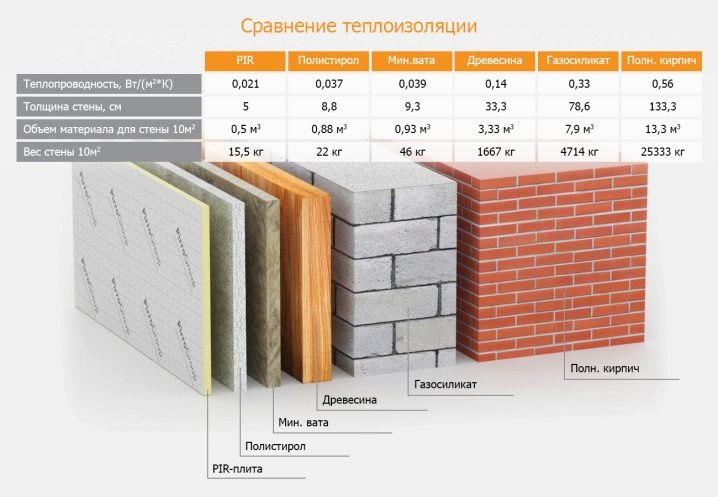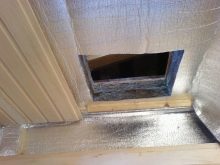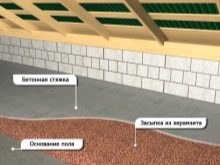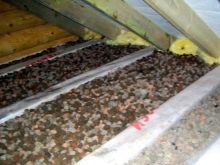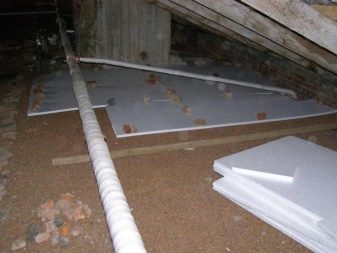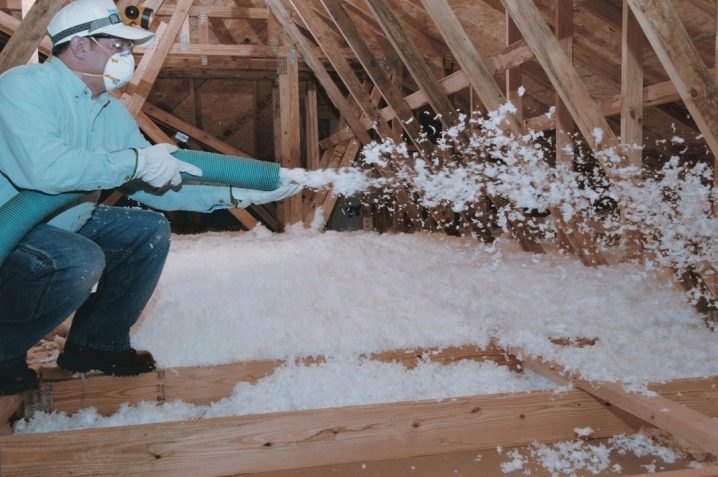The ceiling in a private house: how to insulate from the attic?
If the house has an attic, then it should be insulated, because any owner is ready to fight for heat in his house. Therefore, the process of arranging the ceiling on the side of the attic should be treated with full responsibility and should be executed correctly.
Features: pros and cons
According to the well-known canon of physics, warm air moves upwards towards the ceiling. Therefore, with the “cold roof” and insufficiently warmed ceiling, the heat comes out. This is called the term "heat loss." Through the roof of the house can leave 25-40% of the heat. In order not to heat the street, it makes sense to carry out work on thermal insulation.
Thermal insulation of the ceiling performs several functions at once:
- keeps the heat inside the rooms in the cold season - the air heats up and rises, but does not find a “loophole” for the exit and goes down again, remaining inside the house;
- prevents the penetration of heat in the summer, so the room is supported by a favorable microclimate with optimal temperature conditions;
- minimizes the penetration of excess noise, preserves peace and quiet in the house during a wind, rainstorm or storm.
All insulation works require preparation, because illiterate use of insulating materials and non-compliance with technology will, at best, lead to condensation, and at worst, will create a real fire hazard in the house.
Below are the features of materials used for insulation of floors.
Types and materials of insulation
Traditionally, attic insulation is used:
- basalt mineral wool or fiberglass;
- Styrofoam;
- polyurethane;
- expanded clay, vermiculite and other bulk materials;
- ecowool
Often, homeowners use traditional methods of warming with sawdust and straw mixed with clay.
Insulations vary greatly in their performance., and their prices vary in a fairly wide range. That is why you need to consider each group of materials separately.
Sawdust
Thermal insulation using sawdust is one of the oldest ways to insulate the room. Sawdust is used in those regions where woodworking production is widely developed - there material can be purchased almost for free.
It is availability and cheapness that became the main advantages of the material.
Of the minuses should be noted high flammability. However, this defect is easily compensated by the competent application of modern installation systems. Another drawback is that sooner or later, rats and mice will “pick up” wood chips. To avoid such an undesirable neighborhood, sawdust is mixed with lime, which repels rodents.
Mineral wool
Mineral wool is used for warming the attic space, ceiling, facades, balconies and loggias.
This material has excellent consumer properties and has many advantages:
- relatively low cost;
- ease of installation;
- not suitable for rats and mice;
- low flammability
Along with the advantages, mineral wool also has disadvantages:
- cotton wool cannot be pressed - its effectiveness can be reduced by 30-40%;
- material properties deteriorate when wet, because if a roof leaks in the house, moisture will accumulate in the insulation, which will not only worsen its properties, but will also become a favorable breeding ground for fungi and mold;
- insulation should not be used in a house where people with asthma and other diseases of the respiratory system live.
Expanded clay
Simple and durable insulation.
Its advantages are obvious:
- low weight;
- low thermal conductivity;
- environmental Safety;
- resistance to low temperatures and burning.
The use of expanded clay does not require special technical training, because in order to carry out work on the insulation of the ceiling, it is enough just to cover the treated surface with this material, having pre-bedded any vapor-proof layer.
Expanded clay is suitable for laying in attics with a large number of pipes and floors.
Styrofoam
This is the same foam. It is well known to everyone, it is widely used for quick and effective insulation of ceilings and facades of buildings. It is simple to work with polyfoam: for this purpose it is necessary to make exact measurements and not to cut off excess material from a whole sheet.
The advantages of polystyrene are:
- low weight;
- it is easy to cut;
- it is resistant to moisture and temperature extremes;
- possesses low combustibility;
- ecologically safe;
- not a medium for mold propagation;
- not used for rodents;
- has low cost and availability.
Polyfoam should not be used in the attic with a large number of pipes, as in this case, the coating will simply have to be folded like a puzzle.
Polyurethane foam
This is a special sprayed material. Its application requires special skills and professional equipment.
The material is mainly used in harsh climatic zones - this is due to its exceptionally high performance:
- polyurethane foam fills any gaps, forming a seamless hermetic coating;
- freezing, forms a dense layer on which you can walk without fear of the appearance of dents;
- due to the low thermal conductivity and water absorption, the insulating properties do not decrease at any temperature conditions and humidity levels;
- does not require prior use of heat and waterproof materials for installation.
Of the minuses can be noted high manufacturability, because working with polyurethane foam requires professional equipment and special skills.
Ecowool
This is a relatively new material consisting of fine cellulose fibers.
Among its advantages are:
- light weight - ecowool can be applied with any layer, without fear of making the garret floor heavier;
- safety - insulation is made from environmentally friendly raw materials, does not contain harmful and toxic substances;
- is an unfavorable medium for the reproduction of mold and fungus due to its "preservative" properties;
- retains exceptionally high performance properties over a long period of operation;
- low flammability and self-extinguishing ability.
Which to choose?
Below are some recommendations that will help determine the correct choice of insulation for the attic in a private house:
- If you plan to engage in thermal insulation yourself, then you should give preference to expanded clay, foam plastic or mineral wool. For work with ecowool and polyurethane foam, you need specialized equipment and some technical training - these materials are best left to professionals.
- If the attic floor is made using reinforced concrete slabs, it is best to use claydite as a heater, but it is better to protect wooden floors with mineral wool or cellulose wool, since these materials are considered "breathable" and they prevent the formation of condensate, as well as the destruction of wood.
- Also significantly affects the choice of material and the planned budget. For example, if the owner of the house has access to sawmill waste, you can simply use sawdust and shavings - this will be the most environmentally friendly and at the same time a cheap method of thermal insulation.
How to calculate the thickness of the layer?
To calculate the thickness of the necessary layer of insulation, it is necessary to carry out special calculations. It will not be difficult if you resort to an online calculator. In general terms, the calculation scheme is based on the physical parameters of the substances and established building standards.
For example, in Moscow SNiPs established that the insulation of all types of floors should provide heat transfer resistance, R = 4.15 m2С / W. When a foam with a thermal conductivity of 0.04 W / ms is used, the required thickness of the coating is calculated as: 4.15 x 0.04 = 0.166 m.Polyurethane foam will require a layer thickness of 125 mm, and expanded clay need to take 415 mm in height.
Technology works
The technology of thermal insulation works directly depends on the type of material used.
Bulk materials
The technology of work with bulk materials is considered the easiest. To start the ceiling carefully cleaned, cleaned of dirt and debris. After that, a layer of hydro- and vapor barrier is laid on the surface. Most often used "Izospan", aluminum foil, roofing felt or polyethylene.
The selected material is cut into strips and overlapped. On top of it, it is desirable to apply a layer of soft clay, after which the insulation will fall asleep.
At the finishing stage, a mixture of sand with concrete is applied on top of the expanded clay and sewn with floorboards.
Plate mounting
When flooring plates (for example, foam) technical work is carried out in several stages.
To begin with, the vapor barrier overlaps all over the attic. After that, the plates are laid directly. The most difficult thing is to cut them correctly, which is quite difficult, given the weak flexibility of the material and its flowability.
All gaps at the joints are filled with foamto prevent the formation of "cold bridges". Additionally, foam is processed at the point of entry of ventilation pipes and electrical wiring. On top of the plates fit another layer of vapor barrier.
Dusting
These works require special equipment and are carried out by professional teams in several stages. After each layer of polyurethane foam is applied, a foaming and stabilization step takes place. As a result, the surface becomes seamless and hermetic.
This is an effective method that allows you to carry out large volumes of work in the shortest possible time.
Useful tips and tricks
Each material for insulating the ceiling from the attic has its advantages and disadvantages. The choice depends largely on the personal preferences of the owner of the premises, his financial situation and future plans for the use of the attic. Of course, it is better to give preference to environmentally friendly materials that do not cause allergies in households, and will not pose a threat to the life and health of adults and children.
After insulation, you can convert the attic into additional living space., organize there a storage room for storing unnecessary things, or even make a small room.But this is at the discretion of the host.
How to properly warm the ceiling from the attic, see the following video.
